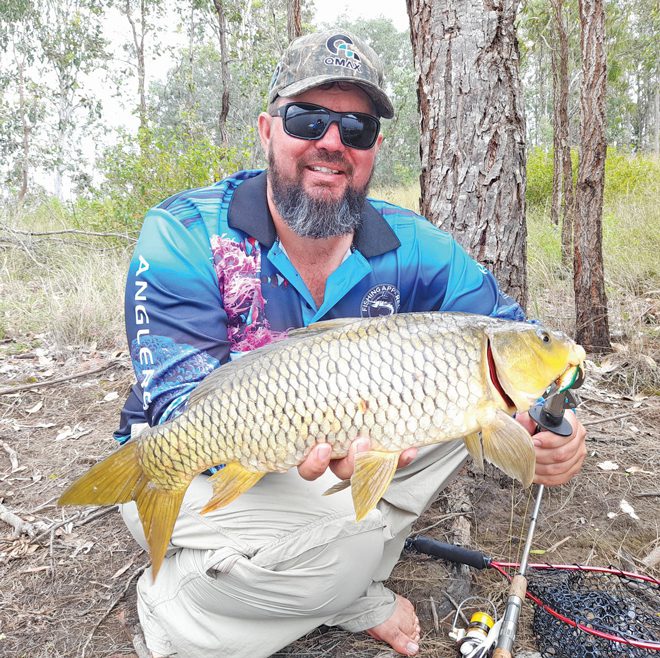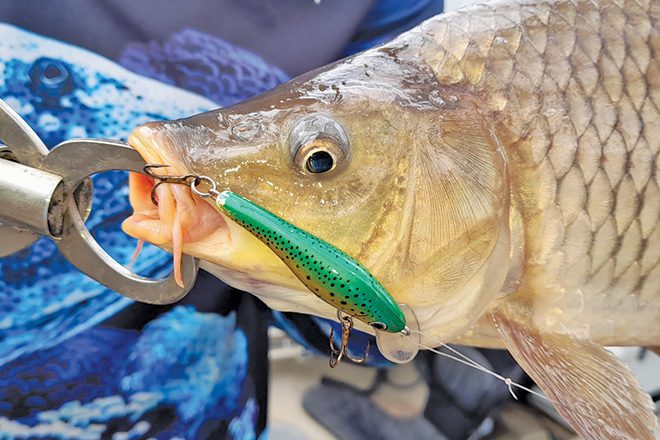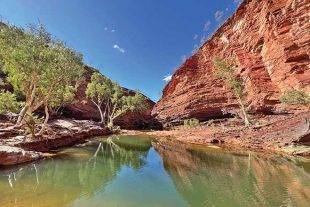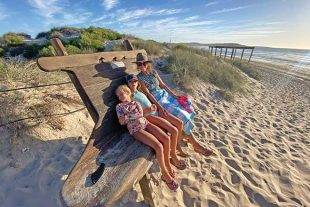Christmas is here again and that means school holidays too. Those of us who’ve had the fishing addiction for years tend to forget hurdles faced during the early days of our angling careers. Many young families will be starting out without a boat or access to champagne locations and premier sportfish. Children are delightfully unspoiled by the biases acquired by us oldies, so are happy catching species of fish shunned by many of the angling fraternity. Wyaralong Dorado
As a barefoot primary-school kid, I cut my teeth fishing for spangled perch in the local creeks and dams around the family farm – fish stocking was decades away. A generation later my children also honed their lure-casting skills on the local spangled perch population then learnt to fly fish by catching garfish in Lake Wivenhoe. Wyaralong Dorado
One of my favourite early holiday photographs is of our entire family of four crammed into my 16′ Canadian canoe spinning for perch in Atkinson Dam. Spangled perch are a great stepping stone to bass, which were scarce enough to be a boutique species in my youth, but good populations of spanglies are hard to find now. Wyaralong Dorado
For the current crop of kids, southeast Queensland’s newest stocked lake offers the land-based family some unique fishing opportunities for species much larger than those spanglies of years past. Lake Wyaralong lies within easy day tripping distance of the southeast’s major population centres and, though stocked with the premier freshwater sportfish of the region, is more renowned for its significant populations of carp and tilapia.

Both of these species are classified as noxious by the Department of Agriculture and Fisheries Queensland and, as pest species, removing them from the environment by angling is a positive step towards restoring the natural balance. Both species can be targeted from the shore but for this month we will look at the larger of the two – European or common carp.
Common carp is a large freshwater fish that grows to over 1m in length in Australian waters and was first imported as an aquaculture species – yes, a table fish – before escaping into the Murray-Darling system and exploding in numbers. When living in clean water such as that of Lake Wyaralong, they are often tinged with hues of gold, unlike the smaller closely related wild goldfish which are most often a dull brown bronze colour.
Though they can be observed feeding on the surface and will chase down prey mid-water at times, carp are predominately a bottom-dwelling species. Watch them feeding on the bottom in clear water and you’ll observe their habit of sucking in sand and silt to filter small food before spitting out the inedible matter. This gives a few clues on how to improve your catches of this fish, with habits greatly different from our native angling species.
Without doubt, the easiest way to connect with a carp is to fish a bait lightly weighted sitting on the bottom. Carp will take a wide variety of bait – ranging from garden worms to sweet corn, bread or dough – often flavoured with surprising additives such as curry powder.








